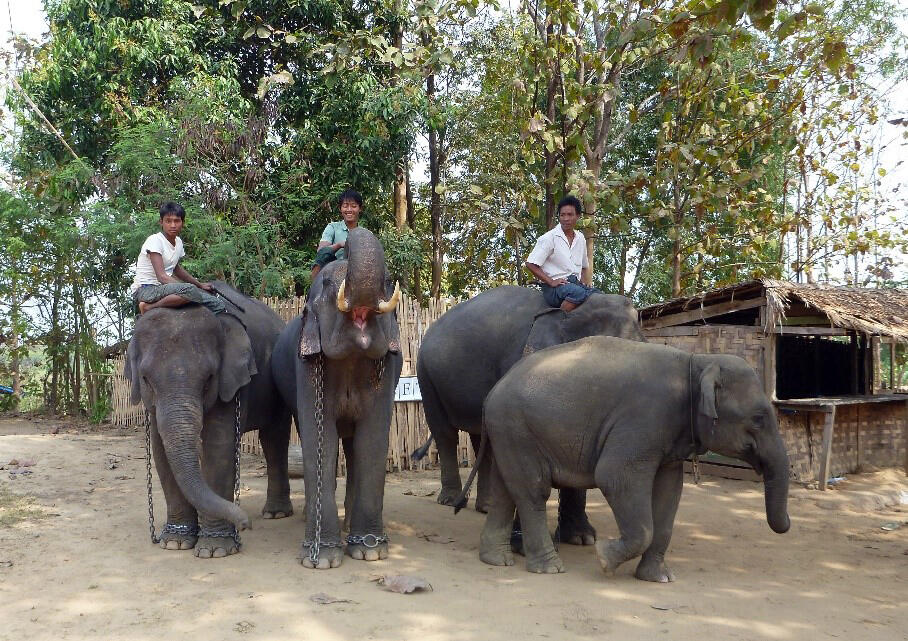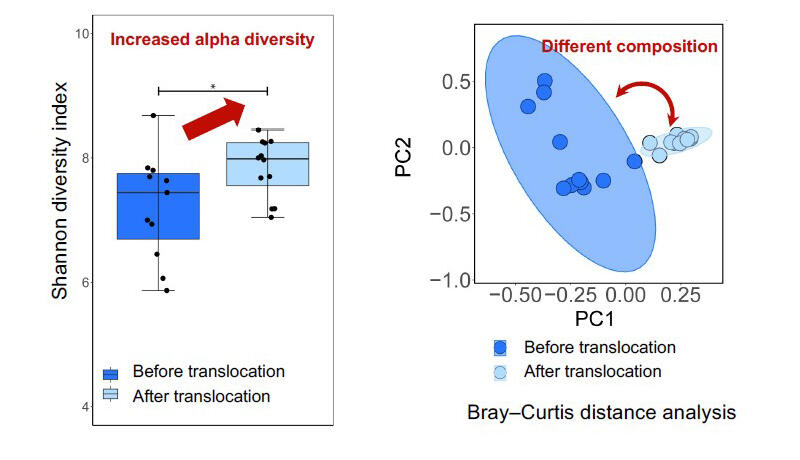The research group led by Professor Emeritus Ken Katakura and Associate Professor Ryo Nakao of the Graduate School of Veterinary Medicine, Hokkaido University, together with Sapporo Maruyama Zoo, the University of Veterinary Science, Myanmar, and Myanmar Timber Enterprise (MTE) have presented findings revealing changes in intestinal flora among Asian elephants recently transferred to Sapporo Maruyama Zoo. Following their move to the zoo, the elephants experienced increased diversity of intestinal flora, new bacterial flora, and changes in the proportion of dominant flora. The findings are expected to contribute to the healthy management of rare animals like Asian elephants. They were published in the international science journal Scientific Reports.

Wild Asian elephants live in a total of 13 countries in South and Southeast Asia, and it is estimated that between human activities and illegal poaching, they are now an endangered species with just 50,000 or so still alive. The intestinal flora of humans and animals alike change in response to diet, stress and environment, and are closely related to the health of their host. Meanwhile, the intestinal flora of rare animals is a little-studied area of research and little is known about the flora inside the gut of Asian elephants.
In this study, intestinal flora investigations were carried out on four Asian elephants after they were introduced to Sapporo Maruyama Zoo from Myanmar in November 2018. Specifically, stool samples were taken from each of the elephants three times before they left Myanmar (January 2017, January 2018 and May 2018) and three times after their arrival at Sapporo Maruyama Zoo (December 2018, January 2019 and February 2019). DNA was extracted from each of the samples. The species of microbes present in the stool samples and their proportion were investigated using metagenomic analysis of the 16S rRNA gene, and the pre- and post-introduction results compared.

The team found major changes in the intestinal flora of the Asian elephants brought about by the move, with a big rise in microbial diversity. Comparing the proportion of the dominant microbes, there was a meaningful increase in Bacteroides and spirochaete microbes following arrival at the zoo and a significant reduction in the proportion of proteobacterium. Moreover, the elephants were found to have taken on new microbes after the transfer from Myanmar to Sapporo Maruyama Zoo. The four elephants are on display at the Sapporo Maruyama Zoo elephant house.
The research group also analyzed other Asian elephants. They compared the intestinal flora of two elephant herds reared under different conditions in Naypyidaw Zoo and an elephant camp in Myanmar.
The two herds were confirmed to have different bacterial compositions, but their levels of diversity and proportions of dominant microbes made no difference.
A comparison was also conducted of the intestinal flora of 14 elephants raised in an elephant camp before and after scheduled administration of albendazole. This revealed changes in the microbial composition following ingestion of the drug. On the other hand, there was a reduction in intestinal flora diversity 10 days after administration of the albendazole, though this increased again at 20 days after, returning to a microbial composition close to that of prior to the drug dose.
This study revealed changes in the intestinal flora of Asian elephants as a result of environment and human management, as seen in humans. Taking stool samples has no impact on animals, therefore it has the potential for use in long-term monitoring for the management of animal health. Animals in zoos fall ill for a wide variety of reasons from dietary changes to seasonal shifts. These ailments are treated on a case-by-case basis, but the search for more scientific and efficient health maintenance regimes has been an issue.
Nakao explains, "The next challenge, I believe, will be finding connections between health and changes in intestinal flora. We hope that findings from continued sampling will contribute to the health of Asian elephants. We also wish to do the same sort of analysis with other endangered species in cooperation with zoos."
This article has been translated by JST with permission from The Science News Ltd.(https://sci-news.co.jp/). Unauthorized reproduction of the article and photographs is prohibited.




